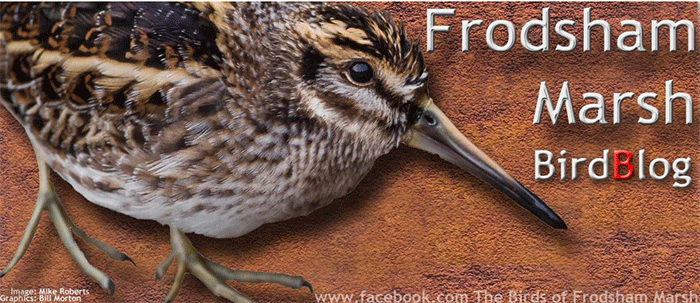Weekly round-up: 29 Apr - 05 May 2015 sponsored by British Birds
There was a marked change in the meteorological conditions this week - the start of the new review period saw a largely rather cool, chilly element in the weather that sat across the country - fresh feeling winds, from the northwestern-ish sector) were accompanied by largely clear skies but gradually shifted themselves briefly in to the southeast and east (in southern England at least) before it all changed again.
As the weekend changed from Saturday in to Sunday, after a cold May days saw snow fall again over the highest peaks, the Atlantic weather system popped some very wet weather fronts trundle across the country, the southwesterly airflow bringing with it considerably milder conditions - temperatures rising by five, six or seven degrees in places.
From then on it was largely mild with that typical mix of sunshine and showers taking us through the rest of the week and on to the end of the review period.
On the rarity front, the overall vibe given off by the headline acts was anything but spring-like - the impressive sextet of the week’s major rares (two of them absolute monsters) was far removed from anything you may have predicted for the end of April - looking, as it did, more like a dreamy late autumn or early winter gathering of high-end megas.
Not that any of that will worry those who have availed themselves of two new birds of late though…
Just where do these things disappear too?
That has to be the first question that was asked as a Wednesday lunchtime Mega Alert popped on to pagers up and down the land - you just knew it was going to be the Hudsonian Godwit again but I for one hadn’t necessarily thought it would be found again on the same pools at Meare Heath that it had frequented on both 24th-25th April.
Those Avalon Marshes are wide and expansive and could lose a Hudwit and assorted Icelandic Blackwit buddies for a while I suppose, but the nigh-on four day absence is something else - how far a field did it wander?
Any of those birders who were unable to get to Somerset on “Unblocked Saturday” or, worse still, those who arrived post the last 4.15 sighting that day really won’t have been worrying too much as to the precise ins and outs of where the bird had secreted itself - the big news was that she was back and available again…
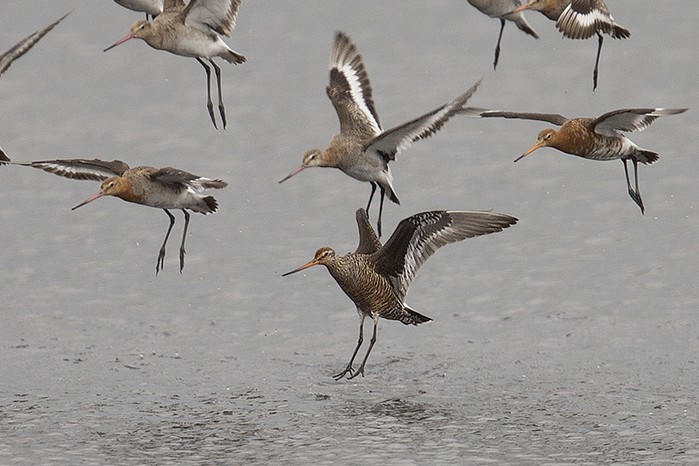
...and available she remained through until an hour or so before dark on 29th, heading away (presumably to roost nearby) with 20+ islandicas - but, as the minutes ticked by the following morning, it must have seemed as tho’ she’d upped sticks again - no sign from dawn until around 9.30 when - daaa-daaaah - there she was again, back on the pools again.
No such games were played on May Day, present and correct to all comers…and she continued to perform through the Bank Holiday weekend too, 100’s more birders going home happy.
Once the godwit flock finally departs towards Iceland (not much longer you’d think - indeed they may have gone already), its game on for islandica watchers countrywide (for a few days at least). If it should be relocated somewhere else in Britain, it seems most likely that it will be on the west coast, somewhere like Frodsham’s Weaver Bend maybe, but equally, there’s a remote chance that the birds will track east before heading off northwest - East Anglian godwiteers should at least be on “amber alert” (Icelandic Black-tails have also acted as recent carrier species to both the rare and really rare dowitcher species and Greater Yellowlegs too).
Or, as seems perhaps more likely, the bird may remain around the Somerset Levels (even if its not seen daily) for another few days before a May departure and a single flight taking it away with the Black-tails - with all settings pointing towards Reykjavik.
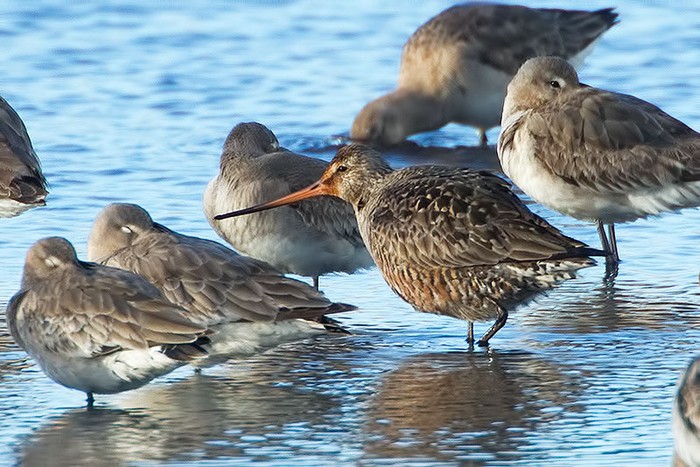
If it does head north and if it does reach the Nordic island (and not veer off to the left towards Newfoundland and Hudson Bay beyond that), there’s a decent chance that it could even be seen on Iceland too - there are numerous scientists (mainly connected to the U.E.A.) who spend the summer on the island, studying and banding the islandicas as part of a long-term research project.
Now the bird is in the system, it could go on to repeat the antics of that very first bird from all those years ago.
…and, whilst we’re on the subject - it is perhaps worth reprising and expanding upon some of the detail mentioned here last week by Andy Stoddart. As he mentioned, there have been just two Hudsonian Godwits here prior to this current Somerset individual, the most recent of which was a one-observer bird noted at the Slains Pool, Collieston (Aberdeenshire) on September 26th 1988.
Before that, the famous reappearing “first” that was seen from time to time between April 26th (yes, pretty much the identical arrival date to the Meare Heath bird…) and May 6th 1983 at Blacktoft Sands (now East Yorkshire, Humberside at the time) - a surprising return after being seen on the pools at Countess Wear (Devon) between November 22nd 1981 to January 14th 1982, that being an occurrence that followed the bird’s initial discovery on those same pools on the RSPB reserve at Blacktoft from September 10th to October 3rd 1981.
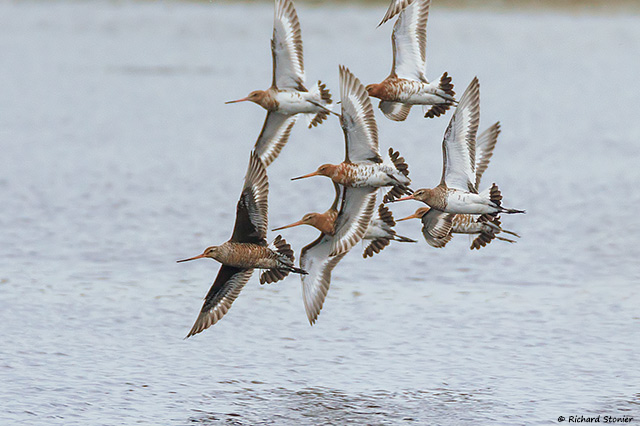
Although it seems as though that first bird was “up for grabs” for over three weeks, that was anything but the case…first noted by warden Andrew Grieve, amongst a flock of six godwits in all, the bird was initially dismissed as a moulting summer Bar-tailed and it was only when it disappeared, half an hour after the first sighting, that Grieve noticed the upperwing pattern was more like a Black-tailed - and it was then thought to be a small version of the accompanying species.
Books were consulted but, at the time, the American field guides available really weren’t up to the job and although Hudsonian Godwit was mentioned in dispatches, features such as the Blacktoft bird’s white undertail coverts and lack of white in the face were thought to point away from such a huge call.
The bird was seen by numerous observers throughout much of the rest of September (it was absent for three days - sounds familiar huh? - but the lack of definitive information, still no views of the underwing and no one deciding to “go for it” in terms of an outright claim meant that it just bubbled along with nothing more coming of it.
The tenacious Grieve saw the bird on September 24th and, still puzzled, he decided to resolve things by checking that essential underwing pattern. On September 27th, he finally nailed the dark underwing and black axillaries - this was indeed Britain’s first Hudsonian Godwit and it was watched well on October 1st-2nd.
The first big arrival of birders on the 3rd saw rather too much clamour come forth from within the hide when the godwit flock dropped on the scrapes - the Hudwit apparently taking exception to the unruly rabble (!), landing just briefly before departing straight back towards the Humber. The next time it was seen was when Gary Wright relocated it in Devon almost eight weeks later…
There’s little doubt that the occurrence of the Hudsonian Godwit has shown just how fickle the world of rare bird observation can be here in Britain - the jubilant air created by Britain’s first twitchable Great Blue Heron on Scilly quickly began to fade after the first few days of successful twitches were had and the mini-demotion continued further as soon as the godwit news broke.
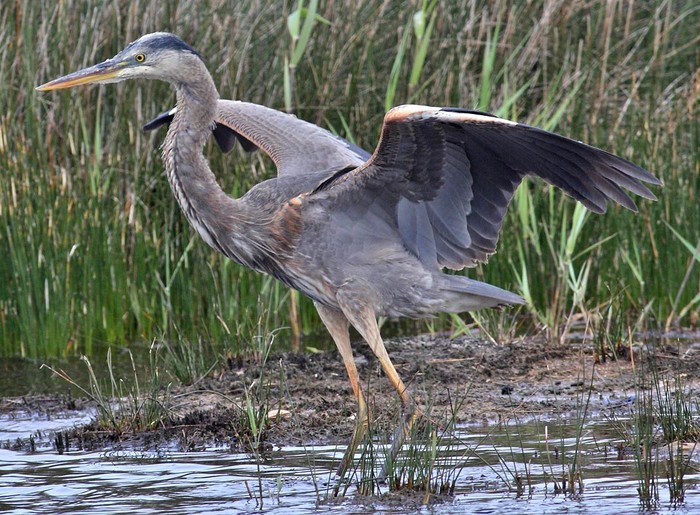
Of course, sense prevails and there’s actually much still to marvel at where this particular long-time-comin’ vagrant is concerned. Ashley Fisher’s remarkable second discovery of the species, on the very same pool on St. Mary’s remains mind-bendingly good - and after all that island hopping in the past fortnight, this week saw the bird settle down around Lower Moors once again, seen there on 29th-30th before heading over the Garrison, towards St. Agnes later the same day before alighting again on Lower Moors.
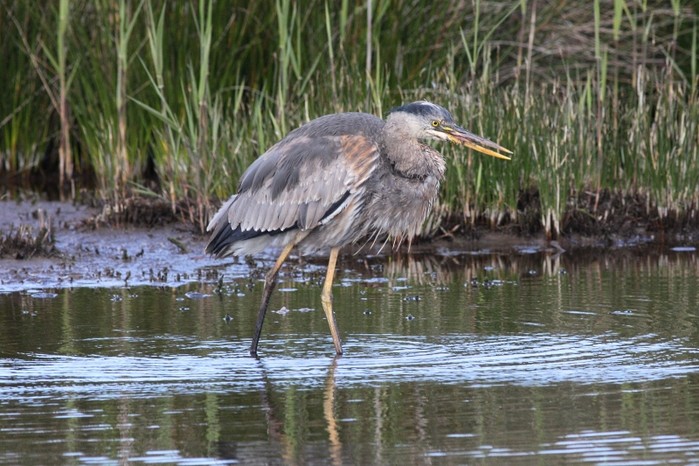
Interest in the big bird has, inevitably, begun to wane and news has become more infrequent but the Bank Holiday weekend ensured that dribs and drabs of information was still forthcoming from Scilly - just one report made on 1st while the 2nd-5th saw note made of this British second’s continuing presence on Lower Moors.
Without wishing to tempt fate too much, it does (increasingly) feel as though maybe this striking first-winter bird could well be around the islands for the duration. Two weeks down (and counting) and, despite all that mooching around, the Great Blue Heron is still in and around Scilly and the odds on it staying for much of the spring and summer ahead (minimum) have begun to shorten.
(Famous last words I’m sure and it’ll be gone before the week’s out…)
The question as to “just where do these things disappear too?” has already been asked in the review but we’ll ask the same question again with relation to the surprise reappearance of, the now summer plumaged, Pacific Diver - seen off the car park at Long Rock, Marazion (Cornwall) on the morning of 30th before other sightings followed around the bay, at Penzance on 2nd and then again at Marazion on 3rd and 4th too.
The last report of this bird came in mid-March, again offshore from Marazion, and while people may not have spent too much time casting their eyes out across the bay of late, the sea will have been looked at within the last six or seven weeks…where has it been then? Way out beyond the bay, further around the Cornish coast or somewhere different all together?
Back in November 2009, this bird made an appearance in partial (generally well-moulted) summer dress on the Carnsew Basin, Hayle and this was topped by the almost fully-summer attired one-evening adult at Grutness, Mainland (Shetland) on May 16th 2013. We’re totally tuned in to the appearance of juveniles and adult winters, but the safe identification of summer adult pacifica is still a boundary pusher here - being off the same bit of west Cornish coast helps, but its still due respect to the observers who found it there this week.
Lancashire’s second Pied-billed Grebe - that in-transit bird from Gloucestershire - continued to show itself rather nicely at Leighton Moss RSPB through until 4th, perhaps considering the next move north?
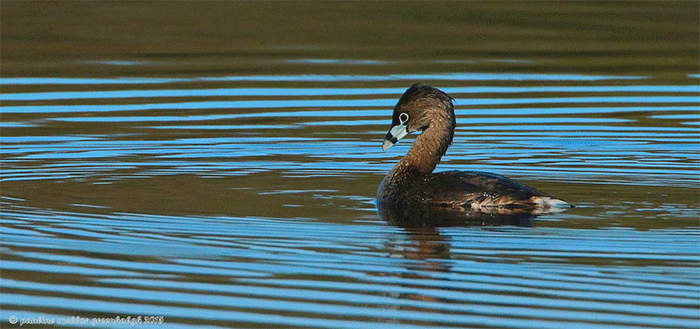
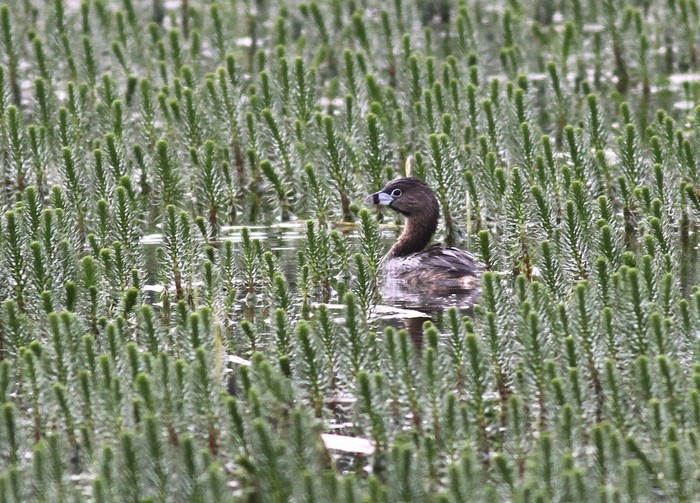
Interestingly, this county second shares at least one trait with the first (albeit in reverse) - the bird at Dock Acres GPs for 16 days from May 24th 1997 was a mover too, leaving the red Rose county for a trip over the border to White Rose territory, seen at Skelton Lake between June and July, with a couple of days at Mickletown Ings as well.
After signalling the presumed departure of the first-summer drake Harlequin from the northeastern Scotland a couple of weeks ago (with at least one caveat - writer’s prerogative and all that…) - the dapper duck was revealed to still be on the River Don last week and he continued his vigil in Aberdeenshire through until May 5th.
With 122 days on the clock, it is now the second-longest staying Harlequin in British birding history, the record target to aim at being 141 days of the female seen around Coll, on the Outer Hebrides, between January and May 2004.
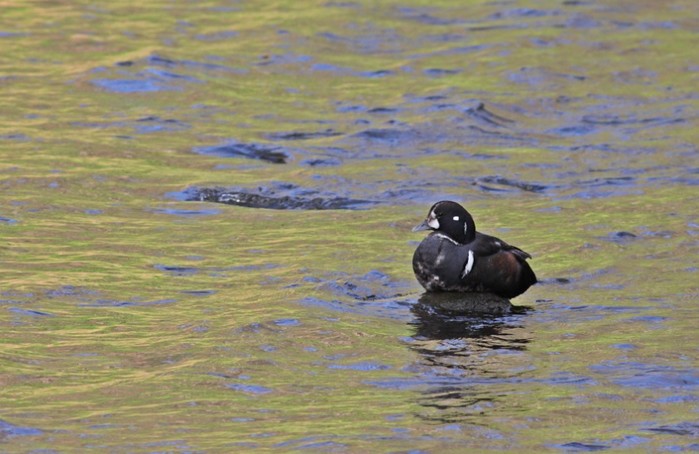
Up the coast and round the corner a bit, at the Sputie Burn, off the coast near Brora (Highland), the almost-as-popular female Harlequin Duckmaintained station through until 30th at least - a total of 73 days for her now, since the first report was made in mid-February.
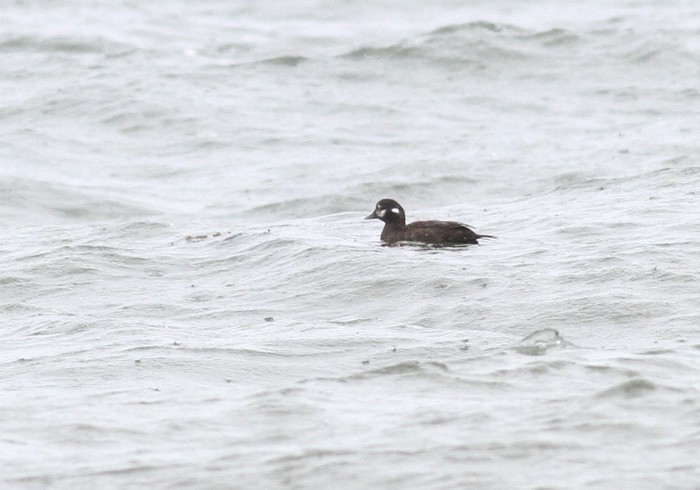
What appears to have been a very freshly deceased Scops Owl was picked up on St. Kilda in the Outer Hebrides on 1st - there’s possibly nowhere worse for this little vagrant owl to make landfall, insects and beetles unlikely to be found in great profusion there.
It looked from photos as if the bird was in good condition, no sign of injury, so perhaps exhaustion and starvation were the root cause of the bird’s demise. With just under 100 accepted records on the books, this will become just the second record for Scotland’s western island chain - the only record to date coming back in June 1980, when a one-day bird was seen at Greian Head on Barra (and, by way of comparison, that’s two records for the Hebs against seven for Orkney and thirteen for Shetland).
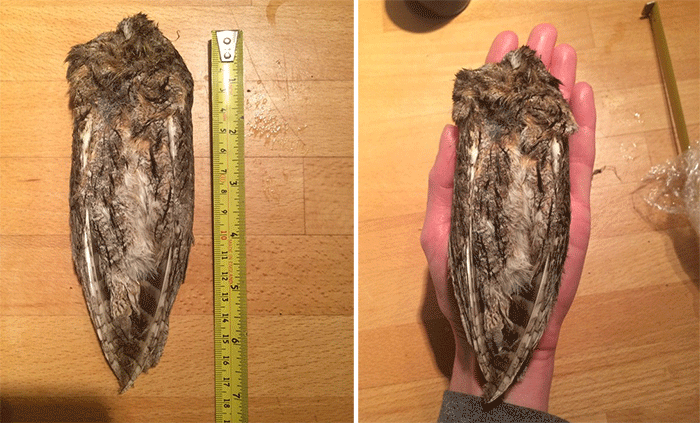
Last week’s Saturday surprise was a shocker-of-a-blocker as it were - this Saturday just gone (May 2nd) the 9am rarity watershed was breached by the discovery of a female Bufflehead at Woolston Eyes NR (Cheshire) - potentially the first county record and also the first twitchable example of this former mega for just over three years.
Sadly though, for county listers and all other interested parties, the late morning brought news of some green-ring appendage - just like the Suffolk bird last summer - and everything ground to a resounding halt, which didn’t feel like a massive surprise either in some ways…
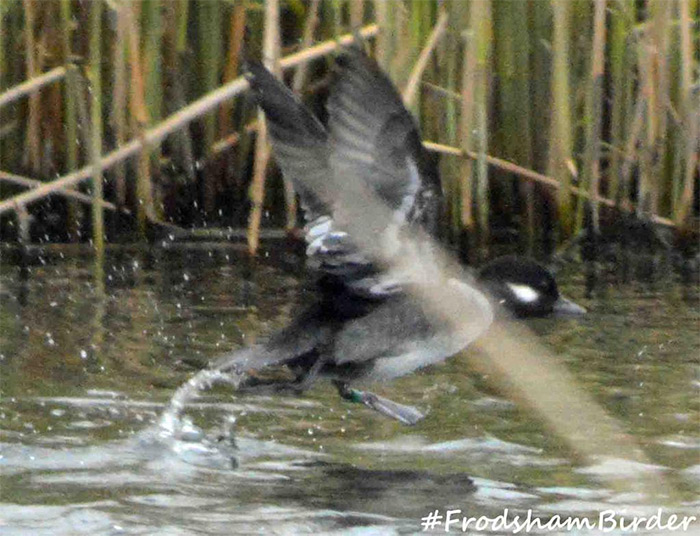
They’re nice birds and being in benevolent mood, we’ll take this one a bit further - with assorted recent long-stayers and available flash males too, Bufflehead doesn’t quite generate the buzz it once did (the seen-by-1000’s drake in Nottinghamshire in March 1994 caused a right old commotion - it was just the 5th for Britain).
Once repeated birds and re-orientating birds (the amazing record of the remote Scottish female seen on the Ardnamurchan peninsula in Highland before being re-found the following day on a loch on Lewis remains spectacular) have been accounted for, you’re up to around 17 birds accepted to date - with last year’s lovely drake on Mainland Orkney about to get the green light any day now (if it hasn’t done already…). For northwest birders , the colour green exhibited by this week’s beastie meant the lights swiftly changed to red...
The number of adult White-billed Divers in Aberdeenshire dropped down a spangley maximum trio this week at Portsoy on 1st with a further trio spread thinly across the Northern Isles - the usual banana-billed beastie continued to reside in the waters of South Ronaldsay (Orkney) to 3rd while two birds were seen around Shetland - a summer adult heading north past Esha Ness, Mainland on 1st with a first-summer logged in Quendale Bay, also Mainland, the following day.
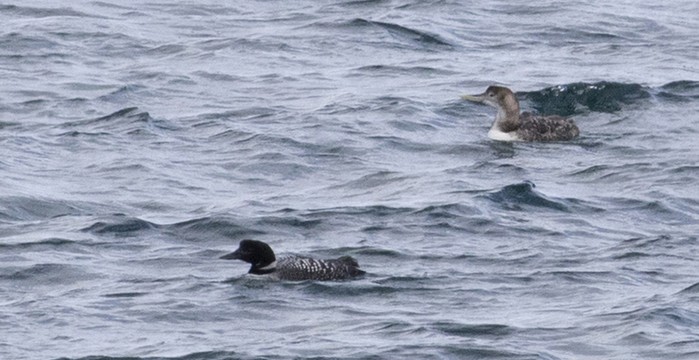
A small trickle (barely a dribble actually) of spring moving Pomarine Skuas was noted across the past seven days - around 80 noted, most of them logged along the south coast (as expected). Regular spots from Portland Bill in Dorset to Dungeness in Kent recorded ones and two early in the week (with a peak of six reached at the latter site on 4th), with fours (or more) by close of play on 5th.
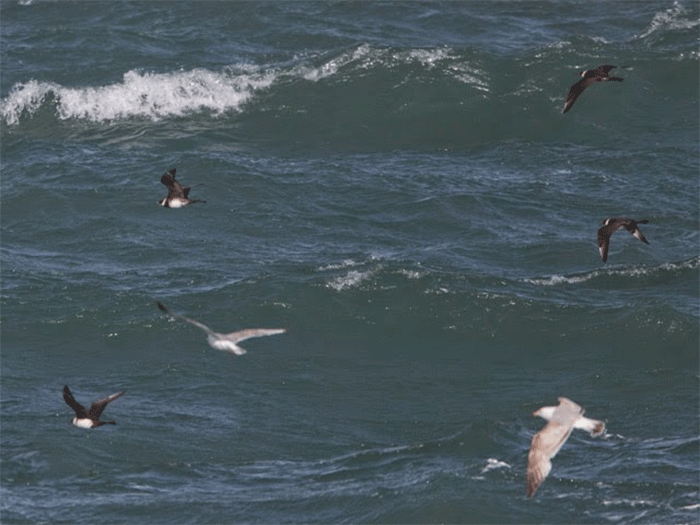
On more western coasts, two were seen at Bowness-on-Solway (Cumbria) on 29th, one was off South Stack RSPB (Anglesey) on 30th while on 3rd there were two each for Loughor (Glamorgan) and Helvick Head (Co. Waterford) with further duos headed past Baltimore (Co. Cork) and Newlyn (Cornwall) on 4th too. The same date also saw five head past Aird an Runair, North Uist.
The only double figure total was the dozen that headed past Saltcoats (Ayrshire) on 4th whilst a very windy 5th saw a further 25+ recorded from Dorset to Dumfries & Galloway, including seven off Portland and Chesil Cove and five were seen from Severn Beach (Gloucestershire). More will surely follow as the weather begins to look rather “Pommy” in the week ahead…
…and, coming out of that very blustery Western Approaches/English Channel weather on the final day of the round-up week, the Long-tailed Skua that flew past Portland Bill and Chesil Cove during the early morning of 5th.
Following on from the report of an immature Purple Heron at Broad Lough (Co. Wicklow) on 29th, the southwest of England provided the other records of this ever-popular overshoot this week - the adult again at Drift Reservoir on 30th with one seen on Bryher on the morning of 3rd, the third vagrant heron species on the island in just a few days…
Not too far away on St. Mary’s, Night Heron sightings continued unabated - a weekly high of three noted around Lower Moors on 3rd. Two more were seen elsewhere around Scilly; one was seen over Lower Town, St. Agnes on 2nd and on Tresco, another was found near the Abbey Pool on 3rd.
Away from Scilly, just one mainland Night Heron was noted, reported from private land near Kingsbridge (Devon) on 4th.
For the first time in what seems like an age, there’s been no news of the Cattle Egret double at Dungeness (no news maybe good news of course…) but there have been a couple of others around to report. A singleton was found at Tide Mills (East Sussex) on 30th while Kent could offer up at least bird, still at Hamstreet on 2nd-4th.
With Ms. H. Godwit attracting a gazillion admirers to all things Avalon, the local Great White Egrets would have been admired in full-on padder mode by many - Meare Heath maxing out at five on 4th (with the adjacent Ham Wall reserve managing four on 30th). Unconnected was the loner at Blagdon on 1st.
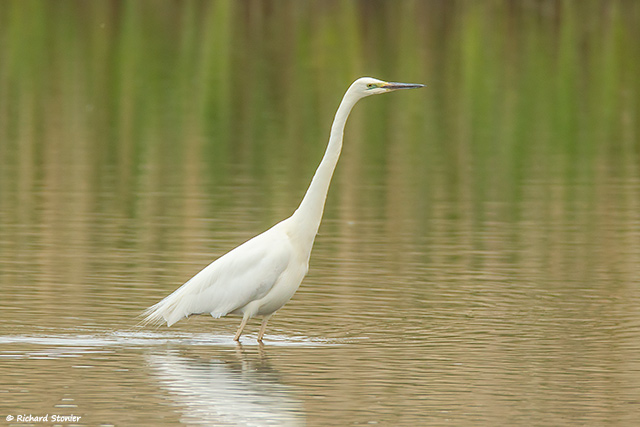
A further eight were noted elsewhere around the country - the southeast hosting singles at Dungeness and London’s Beddington SF on 29th; East Anglia managed two on Paxton Pits NR (Cambridgeshire) on 2nd, with one at Minsmere RSPB (Suffolk) on 1st-3rd; the Midlands and the northeast managed a single bird a piece - one was again at Summer Leys NR (Northamptonshire) on 2nd, while the bird that flew south over Spurn on 30th was presumably the bird located the following day at Huttoft Bank (Lincolnshire).
The final Great Whites this week were seen on the east side of Scotland, heading across both the Isle of May, and then Crail (Fife) on the evening of 3rd with another at Loch of Strathbeg (Aberdeenshire) on 4th-5th. Across on the west coast, at Balvicar, Seil Island (Argyll & Bute) - the second unusual egret for the site (these days Little doesn’t really count) was found on 4th - the other one being altogether much, much rarer... (#14yearblocker).
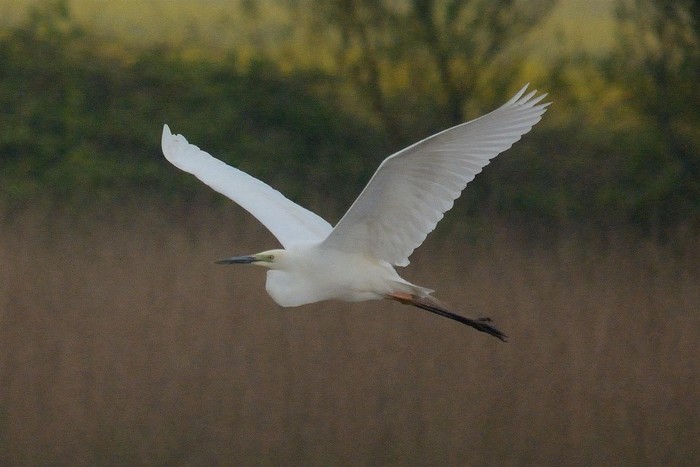
It was, pretty much, “as you were” for the Glossy Ibis on offer this week - the semi-resident bird at Gonalston (Nottinghamshire) was present to 5th at least and the Irish bird was seen again at Tramore Backstrand (Co. Waterford) on 4th (the first sighting in nearly a month. The origins of the flyover White Stork at Hackness (North Yorkshire) on 4th remain unknown, though let’s try and be positive…
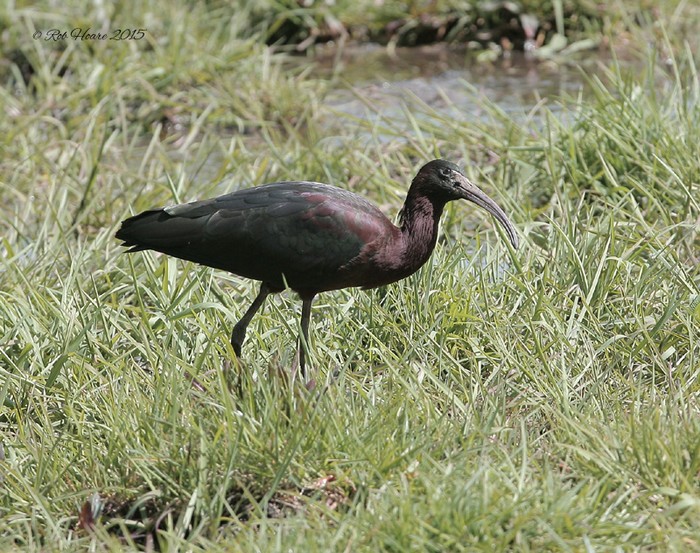
Before departing the subject of White Stork, East Anglia birders may want to take note of this little news story…
www.bbc.co.uk/news/uk-england-norfolk-32504476
As if there weren’t enough hair-brained reintroductions schemes in the country…
A party of five Spoonbills spent some of 30th at Cuckmere Haven (East Sussex) before moving further along the coast to Scotney GPs, on the border with Kent on May Day. The latter county hosted two birds together at Dungeness on 29th and singles at Pegwell and Cliffe on 30th and Sandwich Bay on 1st, while there were two threes lingering at other south coast points - at Bracklesham Bay (West Sussex) on 1st and Keyhaven Marsh (Hampshire) on 3rd. Poole Harbour topped that with at least four birds, all at Arne RSPB on 1st.
A trio of lone birds were reported along the north Norfolk coast through the week while three were at Minsmere RSPB on 2nd-3rd and two arrived on the county’s east coast on 4th, at Martham. A solitary Spoonbill was at Abberton Reservoir (Essex) on 1st and further ones were seen in Lincolnshire, at Gibraltar Point NNR on 29th and Frampton Marsh RSPB on 2nd, with one further north, in East Yorkshire, at Blacktoft Sands RSPB on 2nd, with the same bird paying a brief visit to Paull Holme Strays on 4th. Ireland held one through the week - still at Tacumshin (Co. Wexford) to 4th at least.

Some of the more far-flung Common Cranes included the adult that remained on the Outer Hebrides, still at Loch an’t-Saile, South Uist on 29th and a Highlander too, seen at Portmahomack on 30th. In the far north of England, the two birds noted at Drumburgh Moss (Cumbria) on 3rd soon became the two birds noted at Grindon Lough (Northumberland) on 4th (with a lone bird at Hemscott Hill the same day).
Further double acts were seen on 30th at Chew Valley Lake (Somerset) and on the Berkshire/Surrey border, at Wishmoor Bottom and then on 1st over Ipswich (where it will hopefully be Canaries flying high come Saturday afternoon…). Elsewhere in Suffolk, a quartet of Cranes was again at Minsmere on 29th while in Norfolk, two remained at Strumpshaw Fen RSPB to 1st with at least nine in the Broads too this week. Doubles were noted in Cambridgeshire, at both the Nene and Ouse Washes, while further potential breeders were again in the Goole area, avoiding the turbines at the Rushholme Windfarm on 30th. Another twosome were seen in Worcestershire, over Kemerton on 4th.
Three more Cranes were logged in east Devon, at Colyton and also the Cotswold Water Park on 4th (though maybe just the first set were “wild”) and, last but not least, the single birds in Leicestershire, at Rutland Water on 1st and, on 4th in East Sussex, over Weir Wood Reservoir before making it to Dungeness later in the day and also over Thursley Common (Surrey).
Rounding things off, a couple of singing male Spotted Crakes - one still strutting his stuff (mainly undercover) at the Leighton Moss RSPB reserve (present to 4th) with another heard in the Ouse Washes complex on the evening of 3rd.
During a rather manic October 2014, slipping in amongst a ridiculous role call of crazy rares came some fascinating news from the Welsh county of Powys. The discovery of the county’s first-ever Lesser Scaup was accompanied by the news that the newly-found drake was in possession of a (rather hideous looking) reddish/orange nasal saddle, marked “VH” - and, after some diligent investigations, it was discovered to have been given his beaky appendage on the São Jacinto Dunes Nature Reserve in Portugal, when caught on December 20th 2013, some 1500kms south of the Welsh county.
Enjoying the Llangorse lifestyle, he remained in Powys until February 24th before departing to, well, no one knows. This week though, amazingly, he’s reappeared, but this time in West Yorkshire, on Wintersett Reservoir from 4th-5th - the second at Anglers Country Park in very recent years (a drake was seen there in May 2013).
Where on earth has he been for two months?
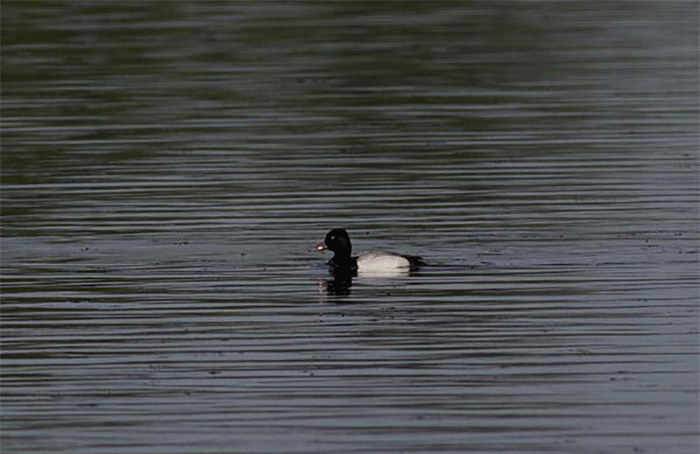
Two other familiar Lesser Scaups remained in place for parts of the week as well - the young drake was still on Martnaham Loch (Ayrshire) to 30th, while the adult drake was at the Cardiff Bay Wetlands NR (Glamorgan) to 3rd.
The new review week began with news of the continuing presence of the drake Green-winged Teal at Greylake RSPB (Somerset) and he was one of only four noted - the others appearing at Loch Stiapabhat, Lewis (Outer Hebrides) on 2nd, on the Ouse Washes RSPB (Cambridgeshire) from 3rd and again at Alkborough Flats (Lincolnshire) on 5th.
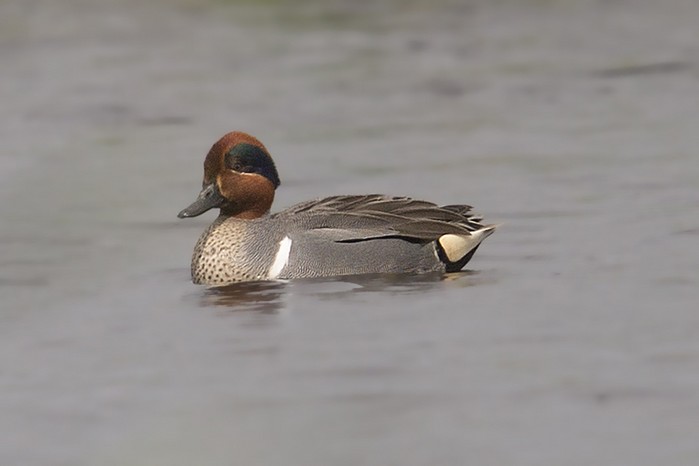
American Wigeons managed two less than their Nearctic chums - fine drakes lingering at Holywell Pond NR (Northumberland) throughout the week with the Wexford male still on Tacumshin’s open water until 30th.
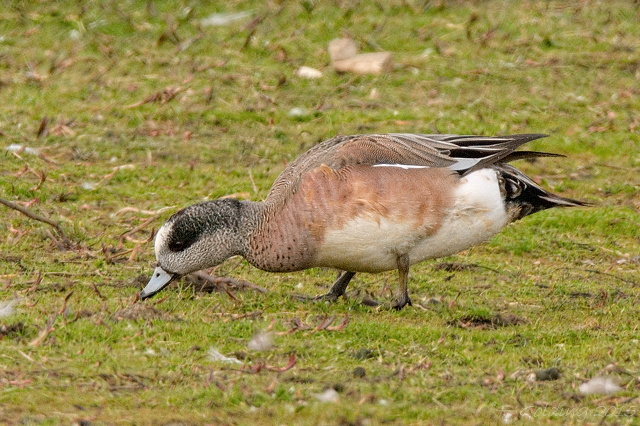
After all the entertainment afforded by the flock of Surf Scoters in northwest England of late, we’re down to just one bird anywhere at all this week, an adult drake still off the sea at Musselburgh (Lothian), present through to 4th.
Perhaps unsurprisngly, there was just one King Eider to report on too - the fine adult drake remaining on the Ythan Estuary (Aberdeenshire) through to May 5th.
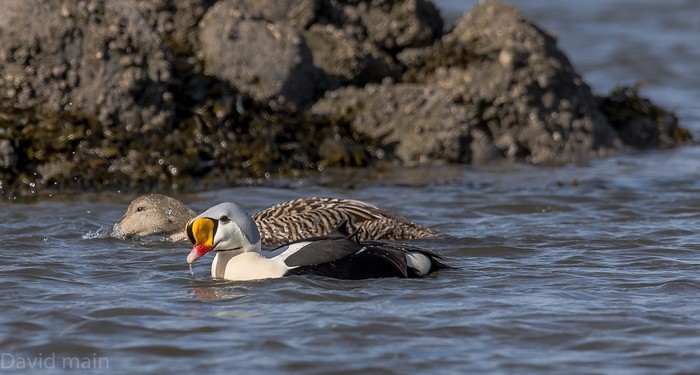
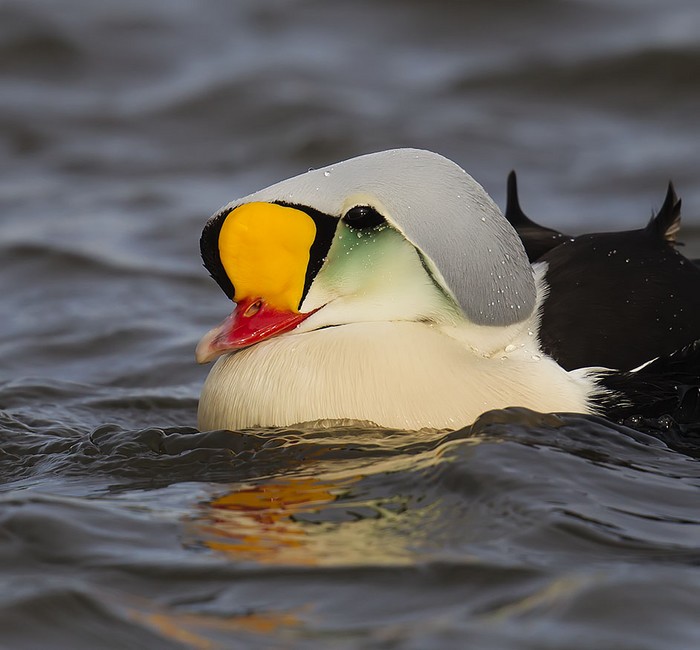
Keeping the lone bird theme going was the week’s only Black Brant - still in Lincolnshire at Frampton Marsh RSPB to 2nd.
After spending a few days last week on Papa Westray, what was assumed to be the same adult White-rumped Sandpiper made a move across to North Ronaldsay this week, present around the Brewan Loch between 2nd-3rd, becoming the island’s first spring record in to the bargain.
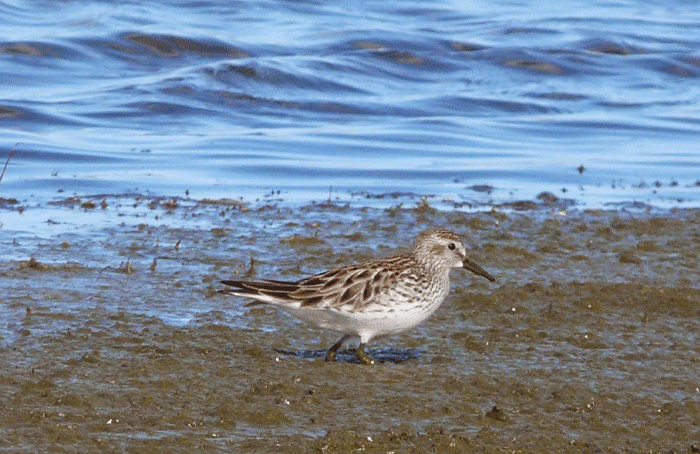
The past seven days have seen a nice little showing of spring passage Pectoral Sandpipers moving through the country - the first was found at Rainham Marshes RSPB (London) from 29th; the second followed the next day, located at Marshside Marsh RSPB (Lancashire); the third was discovered on the meadows at Buckenham Marshes RSPB (Norfolk) on 2nd with the fourth being found on another RSPB reserve, Bowers Marsh (Essex) on 3rd.
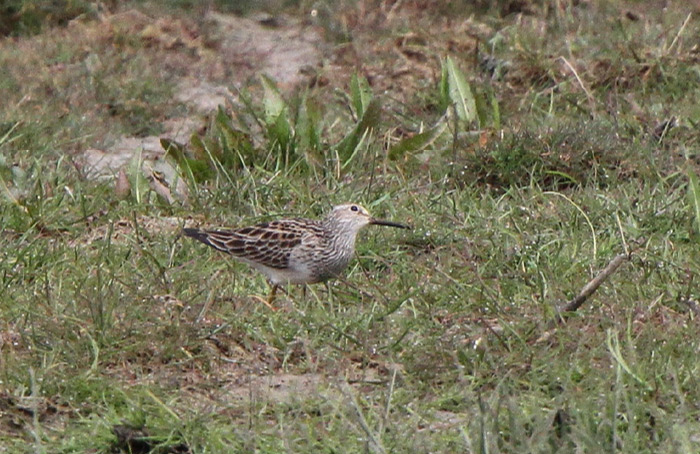
A single Kentish Plover was seen this week, found in the shorebird flock at Steart WWT (Somerset) on 2nd and still present there the following day while the week’s only record of Black-winged Stilt came from Kent, where four birds remained at Cliffe Pools RSPB to 1st, with at least a couple to 4th. Fingers crossed…
Despite the raging SW’ly gales that swept across the country on 5th, the spring’s first Temminck’s Stint made landfall in Cleveland, found at Saltholme Pools RSPB. Yes, spring is truly on the way...
Two trips of nine Dotterels were noted on 2nd - at the Long Mynd (Shropshire) and at Choseley (Norfolk), where numbers have fluctuated for much of the week.
Also in Norfolk, a sometimes obliginmg male was on the northern edge of the Blakeney Freshes, seen there off-and-on between 29th-1st while nipping back to the Midlands briefly, two Dotterel were on the Bredon Hills (Worcestershire) on 2nd.
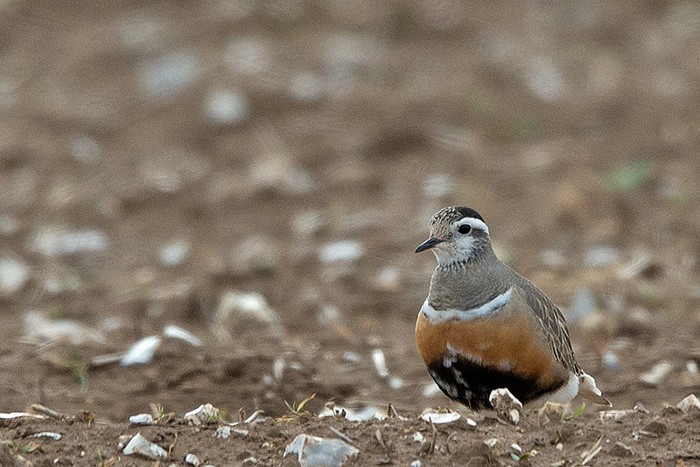
In Lancashire, single birds were seen on the Pendle Hills to 1st and briefly at Downholland Moss on 4th; three appeared at Meols (Wirral) on 3rd and seven were at Tebay (Cumbria) on 4th with two twos the same day, at Foel Fras (Gwynedd) and Ingleborough (North Yorkshire).
A further trip of five was at Aird an Runair, North Uist on 2nd-3rd with three birds found at Baleshare on 4th, with two on Lewis the next day, seen briefly at the Butt of Lewis. Another Scottish island to score was Tiree, two Dotterels there on 5th. On the mainalnd, in Lothian, a Dotterel was at Aberlady Bay on 2nd and two were again in the Pentland Hills on 3rd, with a further Scottish single found on Islay, at The Oa, on 4th.
The final day of the week also saw fresh appearances of ones at Long Nab, Burniston (North Yorkshire) and Kilnsea Wetlands (East Yorkshire), with two at Horseshoe Point (Lincolnshire).
Finally, in County Galway, eight remained at Truska, Slyne Head to 29th.
After a recent false-start with a Bonaparte’s Gull in Hampshire, this week saw the appearance of the Real McCoy - a first-summer bird found in Southampton on 3rd, remaining in to the following two days as well. This will have some significance for many locals, being the first in the county for just short of 12 years, a first-summer spending six early June days at Langstone Harbour and Farlington Marshes in 2003.
Hampshire has, along with the two birds mentioned above, just two further records of the little gull - one day individuals at Gilkicker Point in March 1986 with the first county bird appearing at Farlington in July 1980.
The Cork Laughing Gull remained around the pier at Ballycotton until 30th at least, while the rather rarer Cornish second-winter American Herring Gull continued to make brief appearances at Jericho Farm, near St. Just through until 3rd.
West Cornwall also continued to host one the week’s two Ring-billed Gulls, the fading first-winter still on the Hayle Estuary thorughout the week. Bird #2 was a first-summer that was seen on the Cross Lough, Mullet (Co. Mayo) on 3rd.
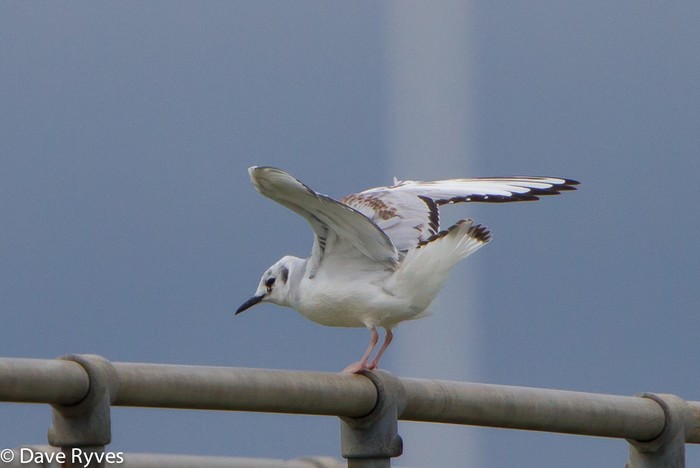
Scotland held on to at least 18 Glaucous Gulls this week, with half of those noted around the Outer Hebrides. A further five were seen on Orkney, two on North Ronaldsay and three at Yesnaby, Mainland on 3rd. Six birds were seen around the northeast of England with the only other bird of the past week appearing at Port Talbot (Glamorgan) on 4th.
Iceland Gulls numbers were almost double those of the big ole Glaucks, some 45 reported this week, with up to 18 or 19 of those seen around the Outer Hebrides, including seven at Rubha Arnal on North Uist on 29th and six juveniles still in the Stornoway Harbour, on Lewis on 1st - they were all part of an overall Scottish total of 28 birds in all. The northeast and southeast of England shared evenly a further 10 birds, with Ireland also registering a further five, including three loitering around Donegal’s Malin Head on 2nd, while Cornwall hosted two and Lancashire and Norfolk a lonesome one each.
Finally, the week’s sole Kumlien’s Gull was seen on the Hebrides, noted on Loch Stiapabhat, Lewis on 4th.
We’re heading in to Raptor Report world now - its May after all - and at some point I may grow a tad weary of including “reported” birds but for now, we’ll plough on regardless - with no disrepect to those who’s sightings come hither...!
Opening up the batting so to speak, the report of a male Red-footed Falcon in Oxfordshire, seen over Meadow Lane Park in Oxford on the evening of 30th.
There was rather more to play with where the same county’s reported Black Kite was concerned; the bird at Egbroke for around ten early morning minutes on 4th was accompanied by a set of fine record shots. Nice!
Also presumably looking very nice were the two Montagu’s Harrier that remained around Blacktoft Sands RSPB (East Yorkshire) that were present throughout the week, to 4th at least and a lone adult male was notd in Essex, at Canewdon on the same date. The 4th also saw a Honey Buzzard head over Grove Ferry (Kent) on the same date.
This latest review period began with a Rough-legged Buzzard heading across the woods at Gusiborough (Cleveland) on 29th and another making its way to Unst (Shetland), seen at Belmont (before being noted at Norwick the folloiwng day). Still in no hurry to depart the Highlands was the juvenile at Lochindorb, present to 1st whilst in east Norfolk, one was seen around the Winterton area from 1st-4th. The final brid of the week was noted at Melton Park (Suffolk) on 4th.
There’s little doubt in were we start our round-up of the Passerines of the Week - it has to be on the upland Pennine borderlands of Derbyshire and Greater Manchester, where a really rinky-dink pinky-red summer dressed Red-throated Pipit made for an exceptional find on the uplands of Ludworth Moor on 3rd.
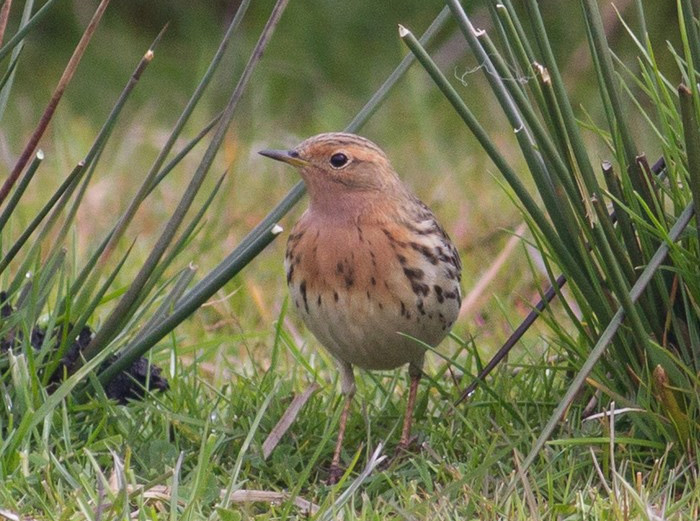
Teetering on headline status, especially given the locality and the subtle beauty of this particularly showy individual, this brilliant patch bird looks like being just the third record for Derbyshire and the first since April 1996 when one spent a couple of days at Hillyfields. The only record prior to that was a four-day bird at Rother Valley CP in May 1985 and this particular 2015 cracker remained on site through to 4th.
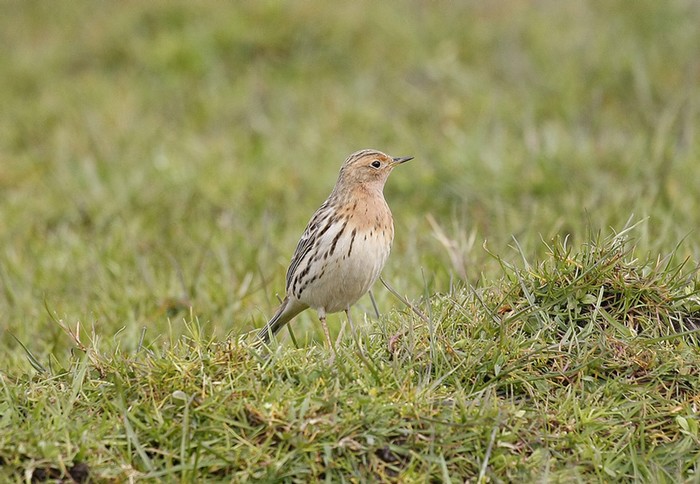
As well as performing wonderfull well, this stunning example of the species eventually burst in to song from time to time too - the fulsome online praise elicited towards this rarely seen now (on mainland at least) plumage were all completely valid - Anthus crinklerensus is born.
Almost bang on cue, the first Tawny Pipit of 2015 lolloped on to the southern end of Fair Isle during the late afternoon of 15th - the first anywhere on Shetland in just under four years and the first on the famous island in a decade. This year’s bird was still present, at Quoy, the following day as well and will be the first to be reviewed by the BBRC in 10 years now that its back in the fold.
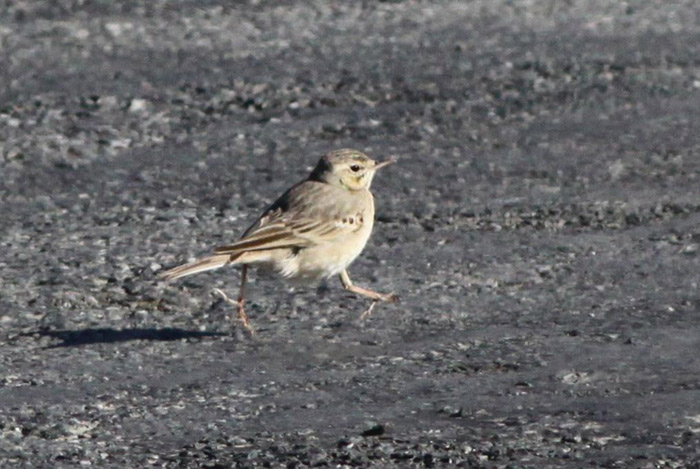
Dorset’s second Western Bonelli’s Warbler within 10 months was discovered at Hengistbury Head on the early morning of 5th with a brief report following later in the day. Last summer a bonelli spent a little time at Portland Bill - and that was the first record of the species since 1984, being just the fifth in all.
Five Red-rumped Swallows were widely spread this week; the first was found at Flamborough Head (East Yorkshire) on 29th and was followed by singles at Shoeburyness (Essex) on 1st, Eastbourne (East Sussex) from 2nd-4th (with two reported there for five minutes on the latter date) and in East Park, Hull (East Yorkshire) on 4th-5th.
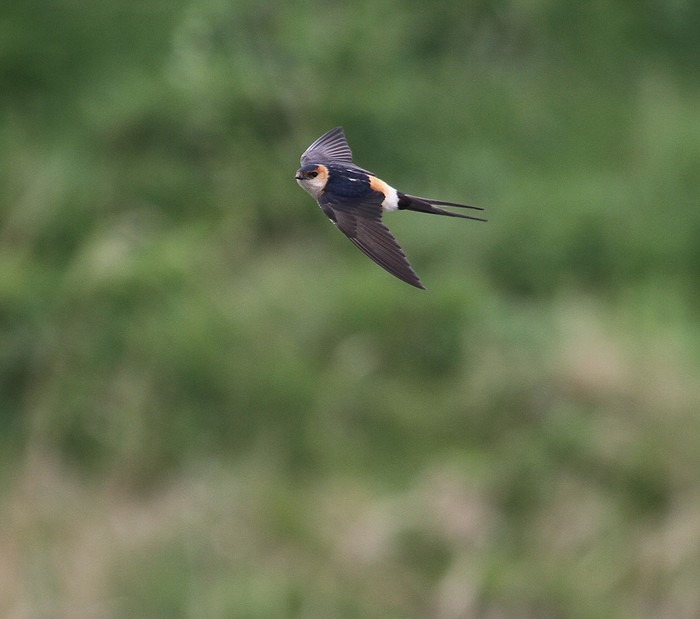
Two of the three Woodchat Shrikes recorded across the past seven days were seen in west Cornwall - one remained at Porthgwarra until 30th and a new bird appeared in the valley at Kenidjack on 4th. Birders searching for the Woodchat later in the day chanced upon the week’s only Golden Oriole, but they couldn’t find the main target. The second GO of the week followed the next day on Scilly, seen at Lower Town, St. Agnes.
The final Woodchat was located in County Cork on the final day of the week, around the car park in Ballycotton.
After that recent near 100-mark Hoopoe week, it is something of a relief to regain the round-up reins with just half a dozen flippety-floppers to report on; three of them found in Ireland. The first two of the triple bill remained on the Mullet, at Blacksod and at Greystones (Co. Wicklow) from last week (the former around to 30th, the latter to 29th) while one on Malin Head (Co. Donegal) was new on 2nd.
New in England were single Hoopoes near Salisbury (Wiltshire) on 29th, at Saul Warth (Gloucestershire) on 1st and on the Isle of Wight, at Ryde on 3rd.
Also this week, one which saw rather low returns for passerines, seven or eight new Wrynecks were logged. The first was seen in East Yorkshire, at Grimston, on 1st and was followed by one at the anagrammatical Castle Eden Dene NNR (Co. Durham) on 2nd, singles on 3rd on Bryher and Fair Isle with the fifth and sixth of the week being seen in the Norfolk Brecks, at Santon Warren and in Fife, on the Isle of May (with another heard-only at Fife Ness) all on 4th. A presumed new bird was then noted on Fair Isle on 5th.
So top heavy in fact is the week, that, suddenly we’ve reached the end already - those passerines really were in that short a supply, so we’ll conclude with the two single unseasonal Waxwings on Shetland, on the Mainland in Lerwick on 30th and near Brae on 2nd and the sad find of a dead adult Rose-coloured Starling found at Ryton (Co. Durham) on 3rd.
May’s finally here then - the month of much promise and, as has often been mentioned here over the past two or three years, arguably the blue riband month of the first half of the year.
This is a month that is, so weather dependent though, if conditions don’t go your way, you’ll be wandering around cursing and feeling rather deflated. If things go your way though, the outlook is all rather different and the birds, common, scare or (fingers crossed) rare just can’t help but fling themselves into flight t’wards us.
Let’s bang the gong again for the likes of Little Bittern and Black Stork - they’ve been seen daily throughout the week ahead (a whopping 33 of the former, 16 of the latter), while another decent punt or two could be had on Broad-billed Sandpiper - some 19 of which have been recorded in the seven days ahead.
If you fancy finding a Black Kite pop you head out the door and look up to the skies on May 8th - prior to departing the rarities list, 12 were seen on that date (to 2005) and the likes of Subalpine Warblers have been ten-a-penny between previous May 6th’s to May 12th’s.
There’s a whole host of other “usual suspects” to muse on - there’s the oft-touted Marsh Sandpiper, Whiskered Tern and Red-throated Pipit to play with and, if conditions suit, we’re still on for Collared Flycatcher and even Calandra Lark - four of which have been found historically within the seven days ahead.
Ramping up the rare factor a notch or two, even beyond the big-billed lark, you can “virtual bird” your days away dreaming of Alpine Accentor (four of them through the days ahead), maybe a departing Baltimore Oriole (two of those), along with doubles of both Brown-headed Cowbird and Spectacled Warbler. One of the latter of those two was suppressed on Scolt Head Island on May 6th 2011 - fortunately for active Norfolk listers that unsavoury happening was expunged last spring - the same sadly can’t be said for the other of Scolt’s stunning Sylvias; the singing male Marmora’s Warbler of May 12th 2001 still leaves scars unhealed across the county.
However, with the fashion being angled so much towards the antique rares of old and the “unblocking” there of, let’s take a final bow this week with impending the 53rd anniversary of the discovery of Britain’s first Bimaculated Lark on Lundy Island, in the Bristol Channel on May 7th 1962. Seen for five days by just two observers - warden (and finder) Michael Jones and his assistant Richard Carden - the singing male seems to have shown remarkably well on the sheep-cropped sward.
Anyone worth their salt knows just two more have followed - on Scilly in late October 1975 and on Fair Isle in June 1976 - and it just feels like one of those birds where you can’t help but wonder when exactly the next one will be.
A bit like Hudsonian Godwit really…
Mark Golley
06 May 2015
Please check out our contributor's websites for more superb birding photos, videos and more.




